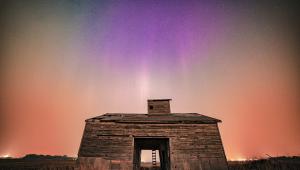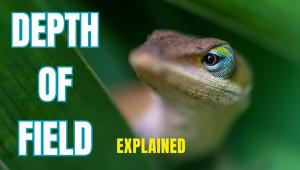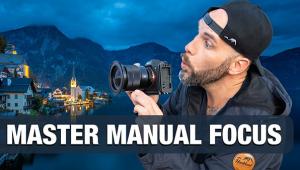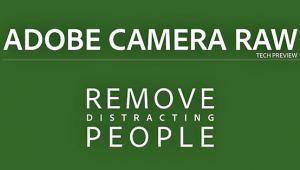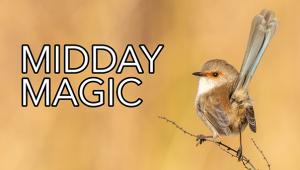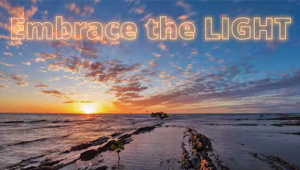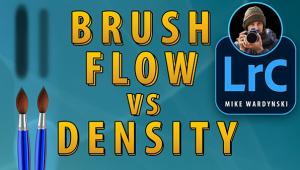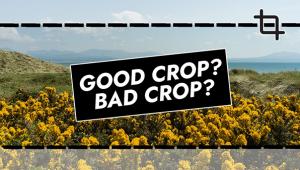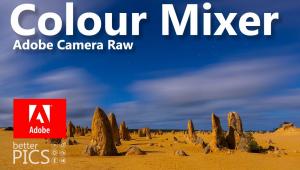Internet Infringement: Right-Click Conflicts
We cannot cover all aspects of copyright infringement in a single column, but our goal is to give you information for further exploration. Special thanks to our two image professionals interviewed for this piece: Serban Enache, CEO and co-founder of Dreamstime (www.dreamstime.com), and Eugene Mopsik, executive director of the American Society of Media Photographers (www.asmp.org). Founded in 2004, Dreamstime is a leader in stock photography and a major supplier of high-quality digital images to the world’s largest advertising agencies, national and international magazines, and film and television production companies. Today, with more than 15 million images, Dreamstime is currently the second leading agency in total customers with more than 12 million unique visitors monthly to the site and is one of the most popular websites in the world. The American Society of Media Photographers (ASMP) was founded in 1944 and has nearly 7000 members and 39 chapters. As a trade association for photographers, ASMP leads the industry in promoting photographers’ rights, providing education in better business practices, producing business publications for photographers, and helping to connect clients with professional photographers.
Shutterbug: Many people are unaware of what the Digital Millennium Copyright Act (DMCA) means to them. Can you explain its implications?
Eugene Mopsik: Wikipedia has one of the simplest and clearest definitions of the topic: “The Digital Millennium Copyright Act (DMCA) is a United States copyright law that implements two 1996 treaties of the World Intellectual Property Organization. It criminalizes production and dissemination of technology, devices, or services intended to circumvent measures (commonly known as digital rights management or DRM) that control access to copyrighted works. It also criminalizes the act of circumventing an access control, whether or not there is actual infringement of copyright itself. In addition, the DMCA heightens the penalties for copyright infringement on the Internet.
“Passed on October 12, 1998 by a unanimous vote in the United States Senate and signed into law by President Bill Clinton on October 28, 1998, the DMCA amended Title 17 of the United States Code to extend the reach of copyright, while limiting the liability of the providers of online services for copyright infringement by their users.”
SB: Internet access may have increased copyright infringement possibilities, but hasn’t it also offered simpler and faster access to educational resources for today’s photographer to learn about contracts and image licensing and to help educate their clients?
Eugene Mopsik: Yes, there are many educational resources for copyright, infringement, licensing, and contract issues. Our resources on the ASMP website are very detailed and available for all photographers to study and adapt for their own needs and client needs. For example, www.asmp.org/licensing discusses the opportunities presented by owning your copyright to license use of your images, including specific examples of licensing categories, and http://asmp.org/tutorials/power-licensing.html illustrates the potential income from different licensing scenarios. Also, www.asmp.org/badcontract walks you through common contract problems and presents alternative contract clauses representing better business practices. For copyright tutorials and information on copyright registration, see www.asmp.org/copyright.
SB: Sometimes images are used with little thought given to copyright laws. Explain how you work with the concept of public domain in your business.
Serban Enache: Public domain photos are not to be mistaken for images found on the Internet (e.g., via search engines such as Google Images). We found that this is one of the most common mistakes people make and Google’s add-ons of features showing copyrighted materials are definitely worth mentioning.
Unfortunately, few people check these and they may end up using copyrighted images without paying for them, which is obviously a copyright infringement. In many cases the photos are even used with our visible watermarks included, which clearly shows the unintentional violation, although we’ve also had cases where the watermark was removed. We find these cases more serious, especially taking into account that some of our images can be purchased for less than $1!
Public domain photos can be used without paying royalties or a license fee, but their amount is limited: they can be old photos where the copyright expired, images made available as public domain. There are images where copyright can’t apply (few people know that reproducing a public work of art such as a painting, without adding creative value by angle, lighting, composition, will result in a public domain photo).
SB: How do you think photographers can avoid image theft?
Serban Enache: Unfortunately, they can’t entirely avoid image theft, which is something I’ve learned over the years. What they can do is limit theft and learn how to address theft in a way that will help them and their business. No matter how much it hurts us to see an image misused, we need to take the right approach, the one that is ethical and makes sense from a business perspective. I’ve seen cases where photographers publicly accused honest buyers, and that doesn’t go well. If someone paid a license, he doesn’t want to end up being called a thief. Just because the client’s designer accidentally left the watermarked comp instead of replacing it with the camera-ready image does not necessarily mean theft. There were cases when a watermarked comp was used, while the buyer in fact acquired the license.
One of the safest ways to start is with a stock agency. If you sell stock photography, this is the best way: you’ll learn how to properly license, what a license covers, how to price your photos, and how to stay protected. It will not only protect your images but also your models’ privacy, while of course adding to the stock agency’s marketing capabilities of those images.
SB: What new technologies are available today?
Serban Enache: If you have an online portfolio or share work on sites such as Facebook and Flickr, make sure that the photos are watermarked and a small copyright notice is being placed on them (graphically) and on their pages informing users that the materials are copyrighted. Though such notice is no longer mandatory (used to be until not long ago, 1989) it definitely helps. Never put up high-resolution images on a public or personal site and always include a copyright notice on the image plus a big transparent watermark.
But then there are sites such as Google, which will parse your images and will include them in their index. Sure, a link to your site will be available, but that doesn’t mean that the user cannot right-click and save the image. In that case, what you need to do is to find that the image is being used. This is when the watermark proves to be useful to define whether the person is an infringer or one of the hundreds of designers who downloaded your “lucky” image.
You can do that using Google’s latest release of image search pattern technology. I assume the same one they’ve been using for a while in their Goggle application or you can use specialized sites such as PicScout, www.picscout.com, and TinEye, www.tineye.com. These sites can help you to find your images in use. Then it will be up to you or your stock agency to determine if it’s infringing or not. These sites can also help buyers to find their way to the person licensing the image. For example, when you have an uploaded photo that someone found on the Internet, it will take that person to PicScout to Dreamstime or another stock agency selling the image.
SB: How does the Dreamstime DMCA automated infringement notification tool work? What happens now when an image is used without permission?
Serban Enache: Dreamstime developed an automated DMCA notification tool to help its contributing members more easily identify instances where their images were misused and help them notify the offender to either remove the image or deliver compensation. As image search engines evolved and traffic to the Dreamstime site increased, so too did instances of reported infringement cases—although in relation to the number of licenses issued the infringement percentage still remains very low.
In the past, if Dreamstime contributors noticed that their images were being used improperly, they would alert us and our team would then have to locate each instance of infringement manually and send letters to the offending party asking them to take down the image or purchase the proper usage license. The entire process could take weeks to resolve.
This new feature allows Dreamstime to notify offenders automatically, which results in quicker infringement resolution for Dreamstime contributors. This feature is the first in the industry to streamline the whole DMCA notification process in this way, and it also serves to help educate image users about copyrights associated with the images they download.
























